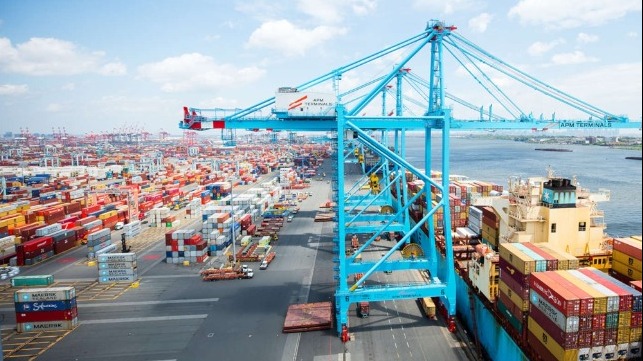New Jersey’s APM Terminals Elizabeth Takes Steps to Reduce Emissions

Following the global efforts to decarbonize to reduce the environmental impact from port operations, APM Terminals Elizabeth embarked on a decarbonizing plan in 2016. It was part of a multi-year effort to reduce energy consumption and emissions through improved efficiency, equipment upgrades, and electrification.
The terminal operator reports that over the past four years its efforts produced a better than 10 percent reduction in CO2 emissions. On average they declined from 18 kg CO2/TEU in 2016, to 16 kg CO2/TEU in 2020.
In January 2021, APM Terminals Elizabeth took the next step in its decarbonization efforts. This includes starting to use green power, from a supplier that offers renewables such as wind and solar. This is expected to reduce CO2 emissions by 45 percent in 2021 alone, slashing 7 kg CO2/TEU from the current 16 kg CO2/TEU intensity. This translates into an estimated emissions reduction of 8000 metric tons of CO2 in 2021.
“Our decision to pursue green sourced energy reflects our overall long-term company plans to decarbonize our terminal operations,” said Jon Poelma, Managing Director of APM Terminals Elizabeth. “We’re progressing on that goal through a multi-year program that aligns with our customers who are also decarbonizing their logistics chains and looking to work with like-minded companies.”
They have also introduced a new gate complex designed to reduce truck idling and improve turn times. They report that average turnaround time reductions of 11 minutes have already been seen, representing a reduction of 3 kilograms CO2/TEU.
“We’re on a path to achieving net-zero carbon emissions and making significant steps this year. We will continue to focus on emission reduction and working with our customers to reduce their supply chain emissions while collaborating with federal, state, and local authorities to achieve this goal together, added Poelma.
Other actions underway to reduce emissions include improving operational efficiencies and traffic management on the terminal.
